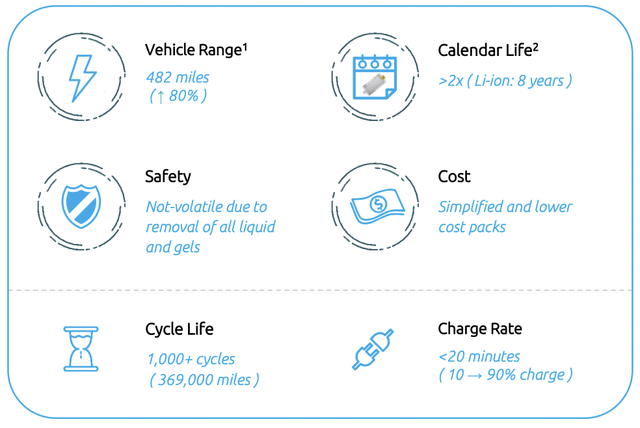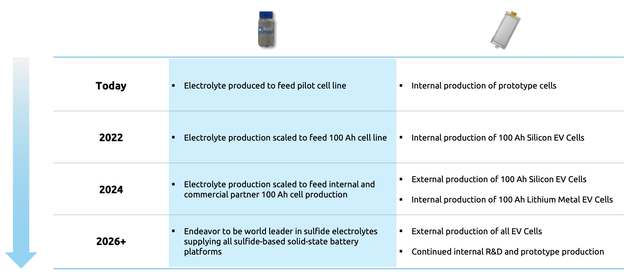undefined undefined
Sales of electric vehicles are going gangbusters. In 2012 whilst just 120,000 EVs were sold globally the figure for 2021 saw this same number sold on a weekly basis with 10% of cars sold last year being electric, 4x the market share in 2019. Sales of gas and diesel-powered vehicles have already flatlined in numerous developed nations around the world as many more policymakers institute dates for a planned phase-out of internal combustion engine vehicle sales. Indeed, New York recently joined California in legislating to make all new vehicle sales zero emissions by 2035. This places two of the USA’s largest economies on the same policy path as the United Kingdom, Japan, the European Union, and China.
Bloomberg New Energy Finance released a report in the summer which stated that sales of gas and diesel-powered vehicles already look to be realizing a secular decline as more and more households opt to go for EVs or their plug-in hybrids cousin. EVs are forecasted to grow to at least 26.8 million by 2030, up from 6.6 million in 2021. This growth will be particularly acute in the United States with its Inflation Reduction Act. The Act represents a step change with at least $370 billion set to be allocated to technologies that accelerate the drive towards net zero. This will see a $7,500 tax credit for sales of US-made EVs start next year and last for a decade until 2032. It also lifts the previous long-standing 200,000 vehicle sales cap that prevented customers from fully taking advantage of the credit.
It’s clear now to most investors and analysts that the future of automotive transport will be EVs. Hence, as transport undergoes its transition from internal combustion engine vehicles, ancillary EV companies like Solid Power (NASDAQ:SLDP) stand to ride an upward demand ramp. The company forms one of the most foremost pick-and-shovel plays on this ramp, albeit coming with a higher risk than EV charging companies like Blink (BLNK) or EVgo (EVGO). Critically, this allows Solid Power’s common shareholders to have a broadly automotive company agnostic approach and mitigates the risk of trying to pick the winners.
High Energy Density x Enhanced Safety Profile
Whilst the challenges of current lithium-ion battery technology has not prevented the runaway adoption of EVs, they still present a bottleneck to more expansive realizable growth. The limited driving range due to comparatively lower energy density and elevated safety risk from their liquid electrolyte form the most pressing issues.
Solid Power’s rechargeable solid-state battery cells replace the flammable liquid electrolyte in conventional lithium-ion batteries with a sulfide-based solid electrolyte. This enhances the safety profile of its batteries and makes them more stable across a larger temperature range.
Replacing conventional lithium-ion batteries with a non-combustible sulfide-based electrolyte will be a Sisyphean undertaking as it faces intense structural challenges. This has caused other solid-state battery developers to abandon efforts at commercializing the technology. For example, SES AI (SES) folded up its solid-state battery manufacturing team after years of development with its CEO describing the technology as challenging to manufacture and impossible to commercialize.
One of the challenges is lithium dendrite growth. This is when metallic microstructures form on the negative electrode as the battery charges. When extra lithium ions accumulate on the anode surface and cannot be absorbed into the anode they tear apart the cell from the inside and cause total battery failure when they reach the cathode. Solid Power uses a sulfide-based chemistry due to it having the highest ionic conductivity when compared to liquid electrolytes. Solving the dendrite problem will be a key challenge that if overcome would see future EVs realize material gains in energy density, speed of charging, and safety.
Mass-market adoption will centre on the close to 500-mile vehicle range Solid Power promises. A calendar life of at least 16 years and a 10% to 90% charge time in less than 20 minutes would further accelerate this adoption. The company last reported its earnings report for its fiscal 2022 second quarter where management provided updates on operations. Cell developments are ongoing with initial 20 Ah silicon anode cells expected to be shipped by the end of the third quarter to their development partners on the back of an EV cell pilot line installation that was completed in June.
The Electric Vehicle Transition Is Well Underway
Solid Power is moving towards a $305 billion total addressable market by 2035. Hence, with cash and equivalents at $484 million as of the end of its last reported quarter versus free cash outflows of $29 million, the company still retains enough liquidity to fully fund operations until the Start of Production in 2026. Fundamentally, the company is an asymmetric bet on the potential evolution of one of the most secular growth markets in the next decade. An investment in the common shares comes with a high risk of failure though as investors are just going by management statements versus hard financials. But the future of transport calls, whether Solid Power answers will be known in the near future.




Be the first to comment